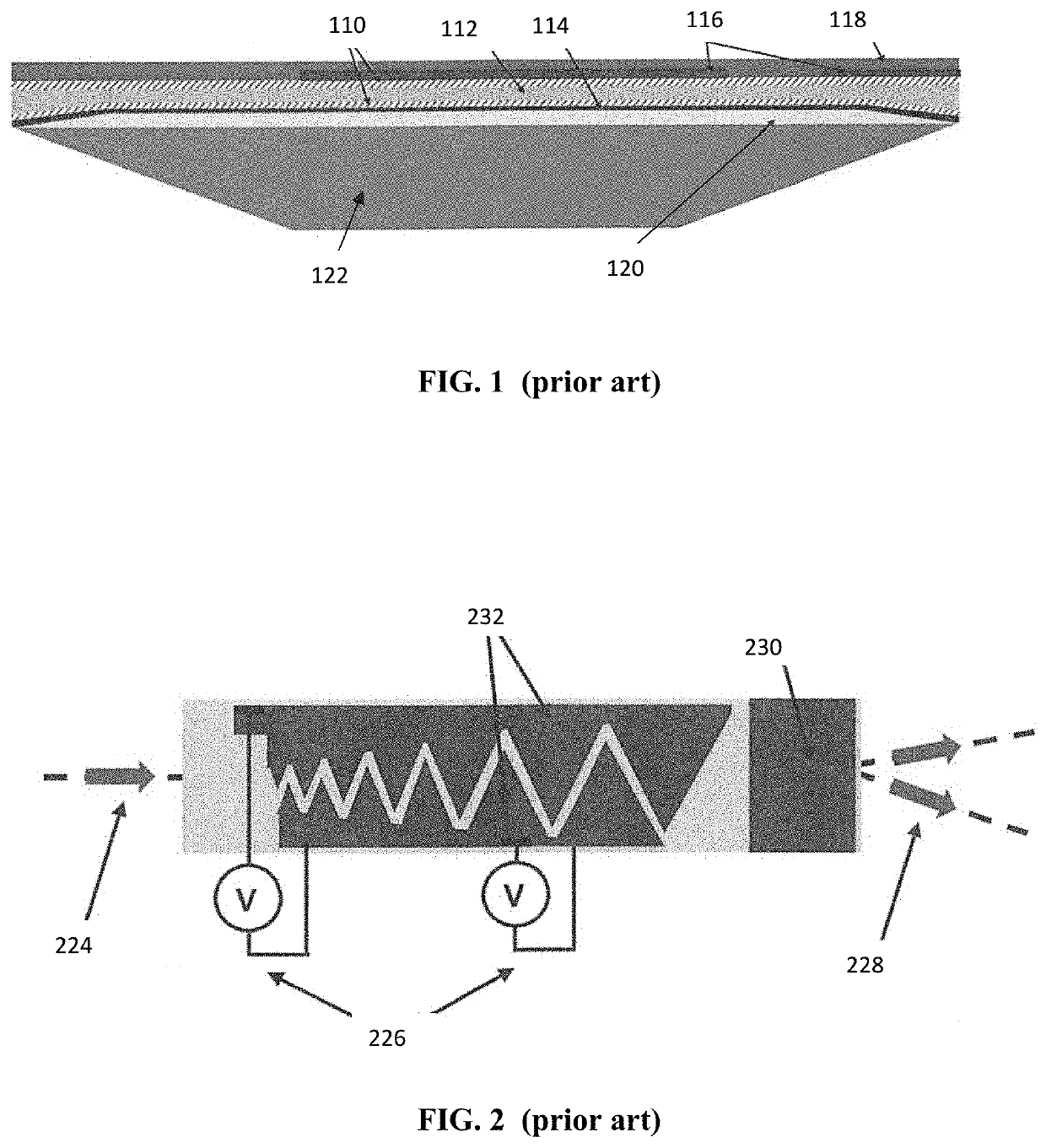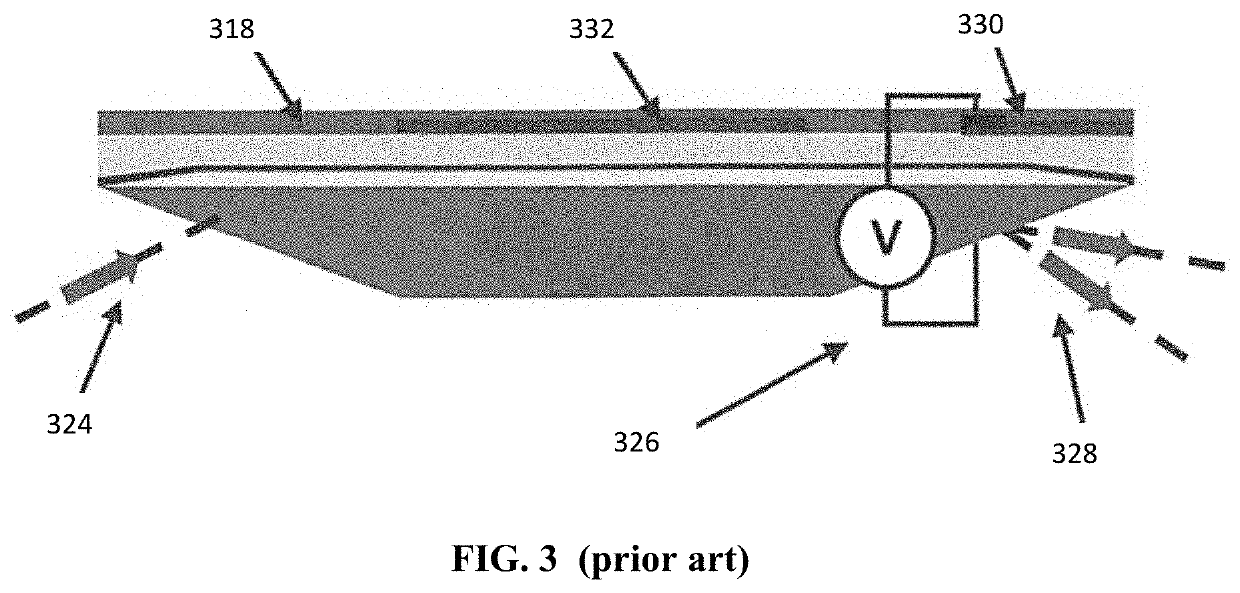Chalcogenide glass waveguides for refractive non-mechanical beam steerer
a technology of chalcogenide glass and waveguides, applied in non-linear optics, instruments, optics, etc., can solve the problems of high repair and replacement costs, slow scan rate, short lifetime before mechanical failure, etc., and achieve low optical loss, low absorption loss, and low absorption loss
- Summary
- Abstract
- Description
- Claims
- Application Information
AI Technical Summary
Benefits of technology
Problems solved by technology
Method used
Image
Examples
Embodiment Construction
[0025]The prevent invention relates to SEEOR devices in which the waveguide core, subcladding, or both comprise ChG. ChGs are amorphous semiconductors that contain as a major constituent one or more of the “chalcogen” elements from group 6a of the periodic table (sulfur, selenium and tellurium), covalently bonded to network formers, such as, Ge, Sb, Ga, etc. (Zakery et al., “Optical properties and applications of chalcogenide glasses: a review,” J. Non-Cryst. Solids, 330, 1-12 (2003)). They have low phonon energy in comparison to most common optical materials and can thus have transmission extending through the MWIR.
[0026]In one embodiment (illustrated in FIG. 4), the tapered subcladding is produced by the following method: a shadow mask with two halves (Mask 1 436 and Mask 2 438) in which the opening is a slit with a width, d, is positioned a fixed distance, h, from the substrate 422. A deposition source 440 with a flux 450 is used to deposit the subcladding. The resulting film has...
PUM
| Property | Measurement | Unit |
|---|---|---|
| taper angle | aaaaa | aaaaa |
| taper angle | aaaaa | aaaaa |
| wavelengths | aaaaa | aaaaa |
Abstract
Description
Claims
Application Information
 Login to View More
Login to View More - R&D
- Intellectual Property
- Life Sciences
- Materials
- Tech Scout
- Unparalleled Data Quality
- Higher Quality Content
- 60% Fewer Hallucinations
Browse by: Latest US Patents, China's latest patents, Technical Efficacy Thesaurus, Application Domain, Technology Topic, Popular Technical Reports.
© 2025 PatSnap. All rights reserved.Legal|Privacy policy|Modern Slavery Act Transparency Statement|Sitemap|About US| Contact US: help@patsnap.com



